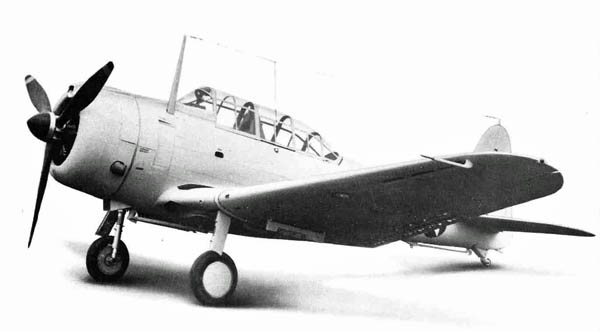Basic flying characteristics of the SBD Dauntless from Pilot’s Handbook Model SBD-3, Douglas Aircraft, 1942.
Flying Characteristics
The model SBD-3 airplane is a single engine, low wing, monoplane, designed for dive bombing or scouting operations from either shore stations or aircraft carriers. This airplane performs all ground and flight maneuvers with the normal characteristics of its type. As a land plane, this airplane will take off from the ground or carrier deck with or without the aid of a catapult, and will land on an ordinary landing field with or without landing flaps, or on a carrier deck in an arresting gear. Dive bombing maneuvers may be made with or without the use of the diving flaps.
Check-off lists are provided in the pilot’s cockpit indicating the operations which must be completed before attempting take-offs, landings, ground operations or air maneuvers, including dives.
The information contained in the following paragraphs is also of importance, and should be thoroughly studied by the service pilot, and followed in addition to the check-off lists.
Taxiing
Refer to pilot’s check-off list for operations and adjustments to be made during taxiing of the airplane. The wheel brakes are adequate for satisfactory control of the airplane during all ground maneuvers.
Take-off
A load of 200 lbs., either passenger or ballast, secured to the rear seat is advisable, but not essential to maintain proper balance for take-off and landing.
Check stowage of flight control lock, hoisting sling, arresting hook and starter crank. The cockpits should be checked for any loose gear, and such items as ammunition, life raft, and baggage compartment doors should be inspected for security.
When thoroughly familiar with the airplane, the pilot may set the control tabs to any deviation from neutral.
The airplane retains normal flying characteristics with either the landing or diving flaps in the closed, partially, or fully opened positions, except that readjustment of the flight control tabs may be necessary to maintain proper trim at different airspeeds. The landing flaps may be opened approximately 15° to assist in take-offs from carrier decks and small landing fields.
Note: After take-off and prior to retracting the landing gear, the pilot should apply the brakes to stop rotation of the wheels.
Landing
Refer to pilot’s check-off list for restrictions, operations and adjustments necessary during landing of the airplane.
The use of the landing flaps is recommended during all landing operations. However, fast landings on improved airports may be successfully accomplished without the use of the flaps. The landing flaps serve to increase the gliding angle of the airplane as they are opened.
Arrested landings may be made with any combination of bomb loading, providing the fuel load has been reduced to such an extent that the gross weight does not exceed the gross weight of the airplane in the fully loaded scout condition.
The indicated landing or stalling airspeed of the airplane increases with the weight, but does not increase with altitude.
The indicated landing or stalling airspeed for various weights and both flap positions and also an airspeed correction chart will be found in the list of illustrations.
Check-Off List for Take Off
Propeller High R.P.M. Mixture Automatic rich Fuel Right tank Check trim tabs Carburetor air Direct Tail Wheel Locked Cowling Flaps Open Oil Cooler Air Scoop Open Low Blower Speed
Check-Off List for Landing
Wheels down 140 kn. max. Propeller High R.P.M. Fuel On reserve Mixture Full rich Tail wheel Locked Carburetor air Direct Low blower speed Landing flaps Down (140 kn. maximum) Oil cooler air scoop Open Cowling flaps Closed (open after landing)










